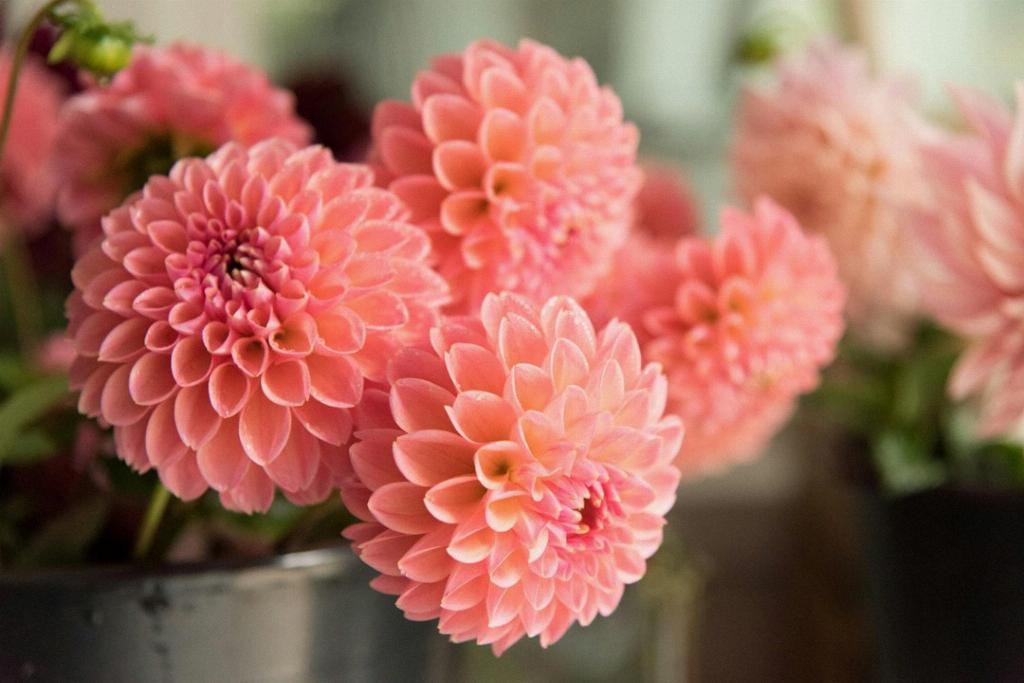When it comes to overwintering dahlias that are grown in pots, there are a few key steps to ensure the survival of these beautiful plants through the cold season. The process may vary slightly depending on your specific climate and growing conditions, but the basics remain the same to give your dahlias the best chance of thriving again in the spring.
Cut Back the Entire Plant
The first step in preparing your potted dahlias for winter is to trim back the entire plant to a height of around 4 to 6 inches. This helps reduce the plant’s overall size and encourages it to enter a dormant state, which is essential for surviving the harsh winter conditions.
Keep the Dahlias in Their Pot
It’s crucial to keep your dahlias in their pot during the winter months. Transplanting them to a different container or into the ground can disrupt their dormancy and increase the risk of rot or damage. By leaving them in their original pot, you provide a familiar environment for the plant to rest.
Choose the Right Storage Location
When selecting a spot to store your potted dahlias over winter, opt for a cool, dry, and dark place that does not freeze. A temperature between 35 to 50 degrees Fahrenheit is ideal for dahlias during their dormant period. Avoid areas with high humidity, as this can lead to mold or mildew issues.
Avoid Watering the Dahlias
While it may be tempting to water your plants during the winter months, it’s crucial to resist the urge when it comes to overwintering dahlias. Keeping the soil dry helps prevent rot and fungal diseases, as the plant is not actively growing and does not require additional moisture.
Protect from Freezing Temperatures
To shield your potted dahlias from freezing temperatures, make sure the storage location remains consistently above freezing. Frosts can damage or kill the tubers, so monitoring the temperature and providing insulation if necessary can help safeguard your plants from cold snaps.
Inspect Regularly for Pests
Even during their dormant phase, dahlias can fall victim to pests seeking shelter in the storage area. Regularly check on your potted plants for any signs of pest infestations, such as webs, holes, or droppings. Addressing pest issues promptly can prevent damage to the tubers.
Label Your Dahlias
To avoid confusion in the spring when it’s time to wake up your dahlias, consider labeling each pot with the variety or color of the plant. This simple step can save time and prevent mix-ups when it comes to replanting and caring for your dahlias once the growing season resumes.
Monitor for Signs of Growth
As winter transitions into spring, keep an eye on your potted dahlias for any signs of new growth. Once the threat of frost has passed, and the temperatures begin to rise, you can gradually reintroduce water to the plants and move them back outdoors to enjoy another season of blooming beauty.
Prepare for Spring Planting
Before replanting your overwintered dahlias in the spring, assess the condition of the tubers and remove any damaged or rotten parts. You can also divide tubers to propagate new plants or repot them in fresh soil to provide the nutrients needed for vigorous growth.
Enjoy the Blooms
With proper care and attention, your overwintered dahlias will reward you with vibrant blooms and lush foliage once again. Take the time to appreciate the beauty of these resilient plants and the effort you put into ensuring their survival through the winter months.

Final Thoughts
Overwintering dahlias may seem like a daunting task, but with the right preparation and care, you can successfully protect these plants and enjoy their colorful blooms year after year. By following these steps and staying attentive to their needs, you can ensure your potted dahlias thrive and bring joy to your garden each season.
